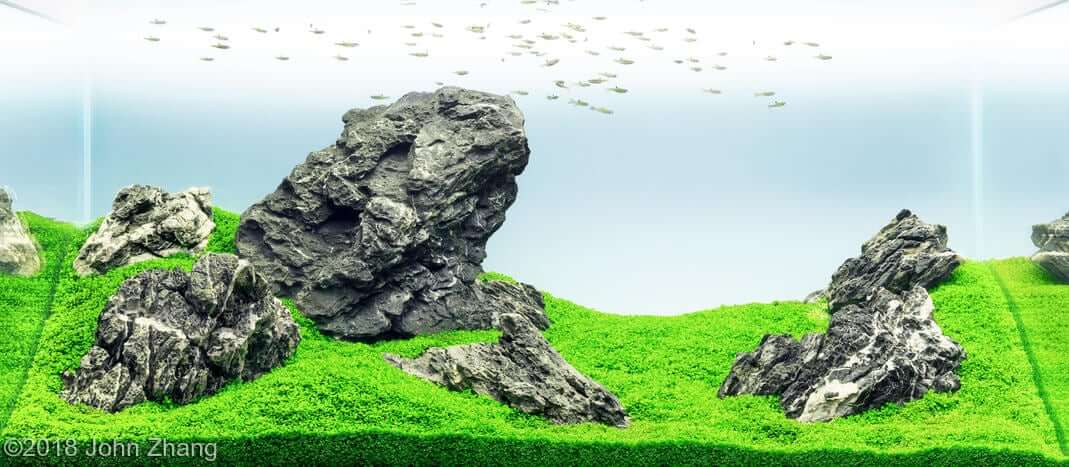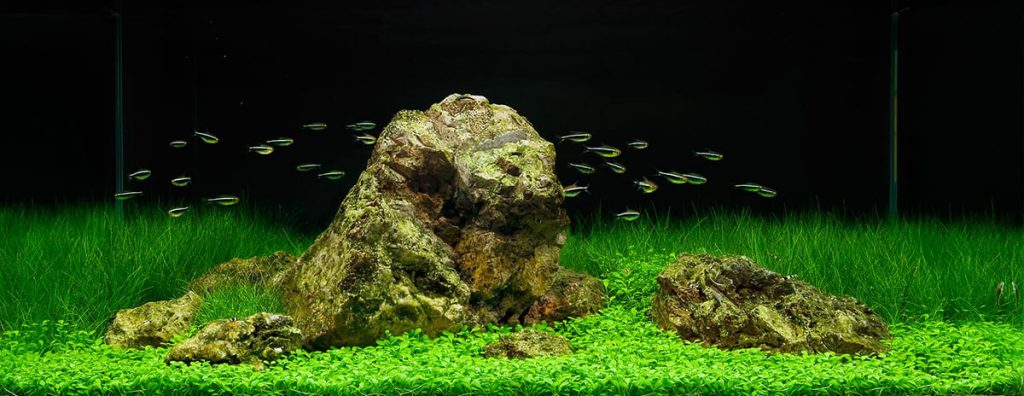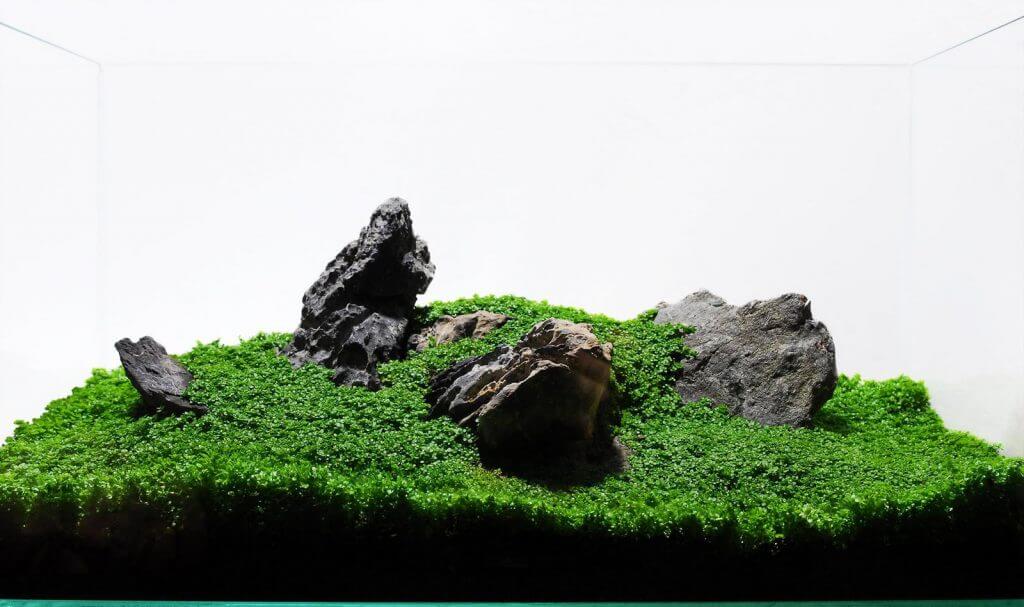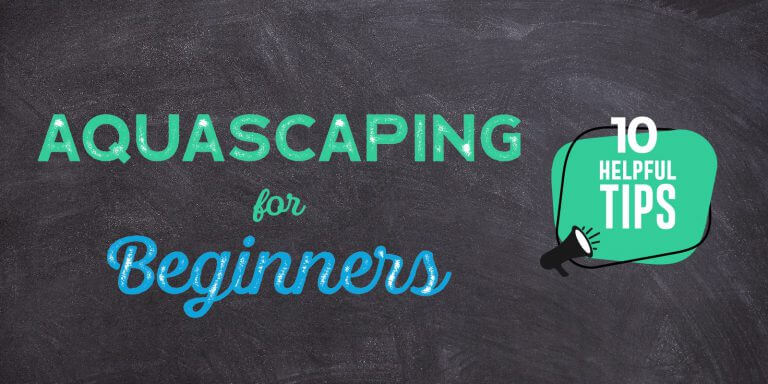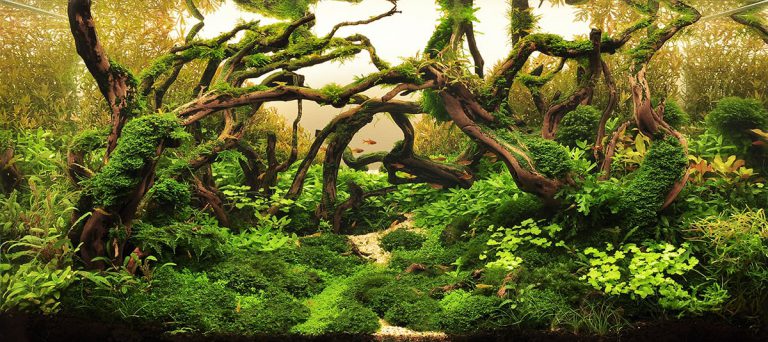The Iwagumi layout is one of the most challenging aquascaping styles out there. Developed around 30 years ago by famous aquarist Takashi Amano, this type of aquascape represents not just a minimalist layout, it also reflects the Japanese culture, spirituality and love for beauty and simplicity.
Defining Features of the Iwagumi Style Aquascape
The Iwagumi term itself comes from the Japanese ‘rock formation’ and it refers therefore to a layout where stones play the leading role. Rocks provide the ‘bony’ structure of the aquascape and the traditional geography is a design made of three main stones, out of which one large headstone and two small others.
The most difficult task when it comes to the Iwagumi aquascaping style is to obtain that harmony and unity through simplicity. The Iwagumi is not about just collecting a number of stones but about placing them in a fluent, natural and spacious way so that they are related both to each other and the rest of the scape.
The Iwagumi Layout – Basic Design Principles and Techniques
Not all Iwagumi aquascapes are of the Sanzon Iwagumi type, meaning a ‘three-pillared rock formation’. In fact, any number of rocks can be used, as long as it is an odd number (3, 5, 7 and so on) so as to avoid that sense of symmetry no one is striving for in aquascaping.
Among the most popular stones used for this type of aquascape are Seiryu-seki, Maten and Shou, but there’s no actual limitation. The aim is to build a group of rocks that are similar in color and texture, yet different in shapes and contour.
Regardless of their number, each stone in the Iwagumi layout has a name and a specific role:
- Oyaishi – This is the primary stone. The largest and most beautiful of all stones, Oyaishi is always placed in the focal point of the aquarium, in accordance with the rule of thirds and it occupies 2/3 of its height, which is the perfect ratio for the human eye, according to The Golden Ratio theory. Oyaishi is also slightly tilted in the direction the water flows, in order to render a natural look, more similar to the river stones.
- Fukuishi – The secondary stone, Fukuishi should resemble Oyaishi in color and texture and it is usually placed on its right or left, being the second largest rock in the Iwagumi aquarium. The main purpose of this stone is to balance out the primary stone and to create tension in the aquascape.
- Soeishi – The third type of stone, usually placed next to the Oyaishi, along with the Fukuishi, accentuating the strength of the first one.
- Suteishi – The fourth largest stone in the Iwagumi aquarium, Suteishi is also called ‘the sacrificial stone’, because it is not meant to stand out and it often gets covered by flora. Nevertheless, the role of the Suteishi is to compliment the entire rock formation by assisting all other stones in creating a sense of togetherness. In a Sanzon Iwagumi aquascape, the Suteishi is omitted.
Recommended Plants for the Iwagumi layout
When it comes to planting an Iwagumi style aquascape, there’s a limited number of plants you can use. This is because, of course, the focus should remain on the stones, which should not be overcome by plants, and aquarium open space, which should prevail.
The most popular plants are low laying carpet flora like Dwarf hairgrass (Eleocharis acicularis), Glossostigma elatinoides and Hemianthus callitrichoides ‘Cuba’.
Other suggested plants for the Iwagumi aquascape include: Pogostemon helferi, Riccia fluitans (submersed and tied to rocks), background plants like Vallisneria nana, Eleocharis vivipari and Rotala sp.
Recommended Fish
The Iwagumi tank is characterized by harmony and unity through simplicity so never forget that because it is important to maintain this feeling when you add fish to your aquarium.
The purpose of fish should be to enhance the aquascape’s sense of tranquility through their fluid movement. Most commonly, schooling fish species like Cardinal tetras, Rummy nose tetras and Harlequin rasboras are used because of their calm and gentle behavior. Avoid using shoaling fish because their behavior tends to break harmony by acting individually, often splitting off from the group.
Complications and Pains of the Iwagumi Style Aquascape
Out of all aquascaping styles, the Iwagumi aquascape looks the easier to accomplish because of the simplicity of its appearance, but the truth is it is the most difficult to obtain and even harder to maintain.
Limitation in the plant sector makes the growing process even more difficult for aquascapers. Plants used when aquascaping the Iwagumi aquarium are heavy root feeders, making the choice of substrate delicate and the choice of water filtration as meticulous.
Not only does the Iwagumi ask for extensive amount of experience in what the choice of plants and hardscape is regarded, but the aquascape itself becomes prone to algae formation.
Algae can appear even in the early stages of your aquarium’s development so pay very much attention and take measures if you notice signs of it. One solution to this problem is breaking the lighting cycle for about an hour during midday.
Enjoyed this article? Spread the word by sharing it with your friends!

